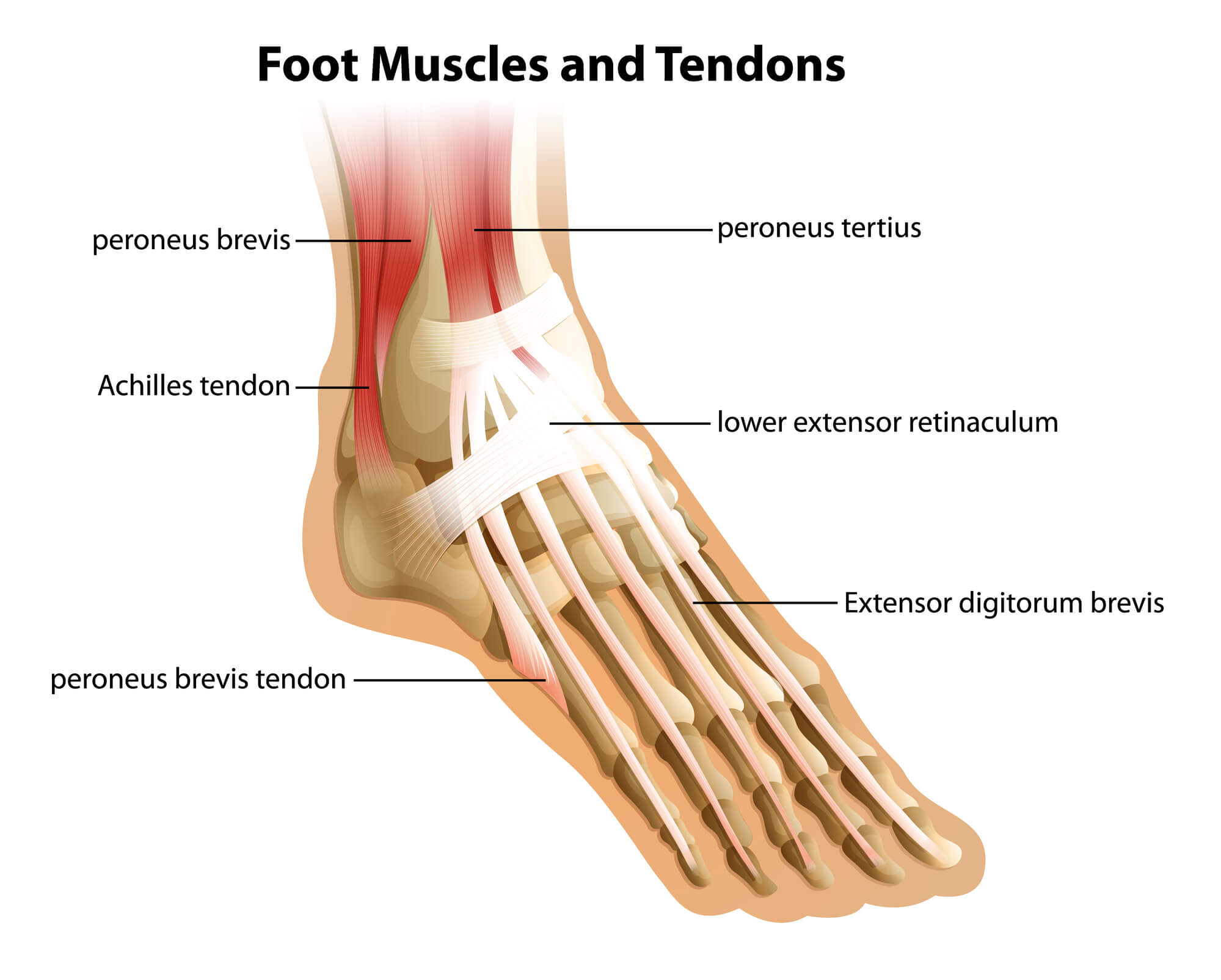Signs of Tendonitis in the Foot and Ankle
Tendonitis is common when the tendons in your foot or ankle become inflamed. This can lead to pain, swelling, and difficulty walking or standing. As a podiatrist, it's important to recognize the signs of tendonitis to provide prompt treatment and prevent the condition from worsening. In this article, we'll explore the signs and symptoms of tendonitis in the foot and ankle and the causes, risk factors, and available treatment options. We'll also discuss tips for preventing tendonitis and maintaining healthy foot and ankle function.
Anatomy of the Foot and Ankle
To understand tendonitis in the foot and ankle, it's important to have a basic understanding of the anatomy of these areas. The foot and ankle contain many tendons, including the Achilles tendon, which connects the calf muscles to the heel bone. The posterior tibial tendon runs along the inside of the ankle and helps support the foot arch. In contrast, the peroneal tendons are located on the outer part of the ankle and help with ankle stability.
Symptoms of Tendonitis in the Foot and Ankle
The symptoms of foot and ankle tendonitis can vary depending on the area affected and the severity of the condition. Common symptoms include:
- Pain and tenderness in the affected area
- Stiffness and limited range of motion
- Swelling and inflammation
- A crunching or crackling sensation when moving the affected area
- Weakness in the affected area
- Difficulty walking or standing

Causes of Tendonitis in the Foot and Ankle
Tendonitis in the foot and ankle is often caused by overuse or repetitive motion. This can occur in people who engage in certain sports or activities that stress the tendons, such as running or basketball. Improper footwear or poor form and technique during physical activity can also contribute to the development of tendonitis. Aging and degeneration, as well as underlying medical conditions such as arthritis or diabetes, can also increase the risk of developing tendonitis.
Risk Factors for Tendonitis in the Foot and Ankle
Certain risk factors may make some people more likely to develop foot and ankle tendonitis. These can include:
- Engaging in certain sports or activities that place stress on the tendons
- Having flat feet or high arches
- Being overweight or obese
- Previous history of foot or ankle injuries
Diagnosis and Treatment of Tendonitis in the Foot and Ankle
If you suspect, you may have foot or ankle tendonitis, seeing a podiatrist for diagnosis and treatment is important. A physical examination and medical history can help determine the severity and location of the tendonitis, and imaging tests such as X-rays or an MRI may be used to evaluate the condition further. Treatment options may include rest, ice, compression, elevation, and physical therapy or medication in more severe cases. Surgery may be necessary in rare cases of severe or chronic tendonitis.

Prevention of Tendonitis in the Foot and Ankle
Preventing foot and ankle tendonitis involves reducing risk factors and engaging in healthy habits. This can include:
- Wearing proper footwear that provides adequate support
- Using proper form and technique during physical activity
- Taking breaks and varying your routine to prevent overuse injuries
- Strengthening exercises to build muscle and increase flexibility
- Proper warm-up and stretching before physical activity
- Maintaining a healthy weight and diet reduces the risk of developing arthritis or diabetes.
Specific Types of Foot and Ankle Tendonitis
While the symptoms of tendonitis in the foot and ankle are similar, specific types of tendonitis may require different treatments. Achilles tendonitis, for example, often occurs in runners and can cause pain and stiffness in the heel and calf. Posterior tibial tendonitis can cause flat feet and pain on the inside of the ankle, while peroneal tendonitis can cause pain outside. Treatment for these types of tendonitis may involve different exercises and stretches targeting the affected area.
Conclusion
Tendonitis in the foot and ankle is a common condition that can cause pain, swelling, and difficulty walking or standing. It's important to recognize the signs and symptoms of tendonitis and seek prompt treatment to prevent the condition from worsening. Reducing your risk factors and engaging in healthy habits like stretching and strengthening exercises can also help prevent tendonitis from occurring in the first place.

